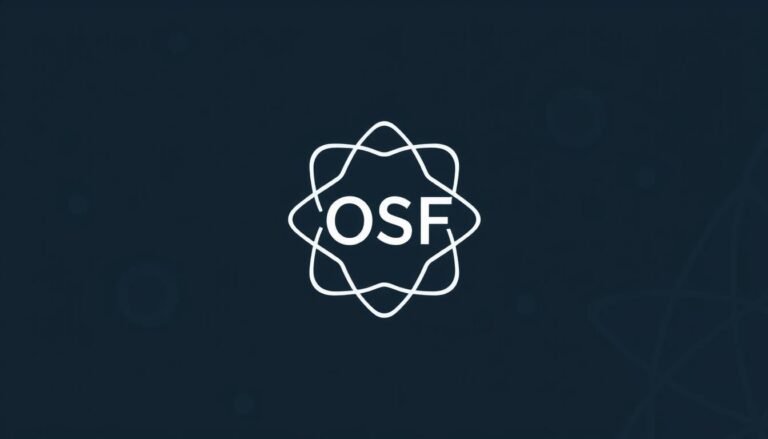
Introduction: The Crucial Pathway to Compliance Success
In today’s dynamic business environment, organizations are increasingly aware of the necessity of compliance. As regulatory frameworks become more complex, understanding how to navigate the journey from policies to penalties has proven essential. The consequences of failing to adhere to compliance guidelines can be severe, ranging from hefty fines to public distrust. In this in-depth exploration of From Policies to Penalties: Understanding the Compliance Journey, we will break down the crucial steps organizations must take to foster a culture of compliance, illustrated with real-world examples and expert insights.
The Importance of Compliance
Why Compliance Matters
Compliance isn’t just a legal obligation—it’s a cornerstone of trust and integrity in business. In an era when information travels faster than ever, maintaining compliance is not just about avoiding penalties; it’s about building a reputable brand. Consumers today prioritize businesses that uphold ethical standards. Compliance ensures that organizations not only adhere to laws but also foster healthy relationships with their stakeholders.
Case Study: Enron’s Fall
Consider the infamous case of Enron. Once heralded as the pinnacle of corporate success, Enron’s implosion serves as a stark reminder of how quickly an organization can crumble if it lacks a robust compliance framework. The company’s failure to uphold ethical standards led to thousands of job losses, billions in investor losses, and a complete overhaul of accounting practices worldwide, including the establishment of the Sarbanes-Oxley Act in 2002. Thus, Enron exemplifies the dire consequences of neglecting compliance.
Understanding the Compliance Framework
1. Policies: Setting the Groundwork
Policies are the backbone of any compliance program. They establish the rules and guidelines that govern an organization’s operations. Policies should be clear, comprehensive, and easily accessible to all employees.
Components of Effective Policies
- Clarity: Use straightforward language to prevent misunderstandings.
- Relevance: Policies should reflect the specific needs and risks of the organization.
- Accessibility: Ensure all employees have easy access to policies via training sessions or digital platforms.
Example: Data Protection Policies
In light of increasing data breaches, organizations need to develop strong data protection policies. A company may implement a policy that mandates encryption for sensitive customer data, outlining exact procedures for compliance to protect consumer rights.
2. Training: Equipping Employees
Once policies are in place, training becomes paramount. Employees must understand not only the what but also the why behind compliance measures.
Methods for Effective Training
- Interactive Workshops: Engage employees with case studies and role-playing to simulate real-life scenarios.
- E-Learning Modules: Utilize online training platforms for self-paced learning, allowing employees to revisit material as needed.
Case Study: Bank of America’s Training Program
Bank of America recognized gaps in compliance knowledge among its employees and introduced an innovative training initiative. The program used real-life scenarios to demonstrate the ramifications of non-compliance, leading to a significant increase in adherence to regulations, particularly in anti-money laundering practices.
3. Monitoring and Assessment: Staying Ahead of Threats
Active monitoring and regular assessments are crucial in the compliance journey. Organizations must be proactive in identifying potential issues before they escalate into penalties.
Tools for Effective Monitoring
- Audits: Regular internal audits can identify lapses in compliance.
- Data Analytics: Leveraging data analytics can help track compliance metrics, offering insights into areas needing improvement.
Example: Continuous Compliance Monitoring
Many financial institutions now employ automated systems that continuously monitor transactions for suspicious activities. By doing so, they can circumvent potential penalties before non-compliance even becomes apparent.
4. Reporting Mechanisms: Encouraging Transparency
An effective compliance program includes robust reporting mechanisms. Employees should feel safe reporting potential violations without fear of retribution.
Implementation Strategies
- Anonymous Reporting Hotlines: Establishing a hotline fosters a culture of transparency and encourages employees to voice concerns.
- Whistleblower Protections: Clearly outline protections for whistleblowers to promote a culture of honesty.
Case Study: Siemens’ Compliance Transformation
Following intense scrutiny and penalties for corrupt practices, Siemens overhauled its compliance program, establishing a rigorous reporting mechanism that encouraged reporting unethical behavior. The company has since rebounded, restoring its reputation through transparency and accountability.
The Cost of Non-Compliance
1. Financial Penalties and Fines
The immediate impact of non-compliance often manifests in substantial financial penalties. These fines can cripple an organization, particularly smaller businesses.
2. Reputational Damage
Beyond monetary loss, non-compliance can lead to detrimental reputational harm. Companies found in violation of compliance regulations often see consumer trust erode, making recovery a daunting task.
3. Legal Ramifications
Non-compliance can lead to legal battles, consuming valuable resources and diverting attention away from core business operations.
Table 1: Financial Implications of Non-Compliance
| Type of Cost | Impact |
|---|---|
| Fines | Costly financial penalties |
| Legal Fees | Significant costs in litigation |
| Reputational Damage | Loss of customer base and trust |
| Operational Costs | Resources diverted to compliance efforts |
Moving Beyond Compliance: Cultivating a Compliance Culture
A successful compliance journey doesn’t end with policies and penalties. Organizations must strive to cultivate a compliance culture where adherence becomes second nature.
Leading by Example
Leadership plays a vital role in embedding compliance into the organizational fabric. When leaders model compliance behaviors, it fosters an environment where employees feel compelled to follow suit.
Ongoing Education and Communication
Compliance is not a one-time effort; it requires continuous education and open communication. Organizations should prioritize regular updates and refresher courses to keep compliance front-of-mind.
Leveraging Technology
The integration of technology into compliance efforts has streamlined processes and improved adherence. From utilizing AI for predictive analytics to implement risk management systems, technology is revolutionizing how businesses approach compliance.
Conclusion: The Compliance Journey as an Ongoing Commitment
In closing, navigating From Policies to Penalties: Understanding the Compliance Journey is not just a regulatory obligation but a critical business strategy. Effective compliance fosters trust, mitigates risks, and enhances an organization’s reputation. By establishing robust policies, providing effective training, and cultivating a culture of compliance, organizations can transform compliance efforts from a mere duty into a strategic advantage.
Motivational Takeaway
Remember, compliance is a journey, not a destination. Your commitment to integrity and ethical practices will resonate with stakeholders, ensuring long-term success and sustainability.
FAQs
1. What is the primary purpose of compliance policies?
Compliance policies aim to establish guidelines that ensure an organization adheres to applicable laws and regulations while fostering a culture of integrity and accountability.
2. How can organizations measure the effectiveness of their compliance programs?
Organizations can measure compliance effectiveness through regular audits, employee feedback, compliance metrics, and monitoring for gross violations.
3. What are some common challenges in implementing compliance programs?
Common challenges include employee resistance, lack of resources, insufficient training, and the evolving nature of regulations.
4. How often should compliance training be conducted?
It’s advisable to conduct compliance training at least annually or whenever significant regulatory changes occur, and to provide ongoing refreshers throughout the year.
5. Can small businesses effectively implement compliance programs?
Absolutely. Small businesses can adopt scalable compliance programs suited to their size and complexity. Streamlined processes and technology can facilitate effective compliance without excessive costs.
In this exploration of From Policies to Penalties: Understanding the Compliance Journey, we’ve uncovered the essential steps to cultivate a lasting compliance culture within organizations. By embodying these principles, businesses can navigate the landscape of compliance with confidence, ensuring they not only adhere to regulations but also thrive in an increasingly competitive market.

















